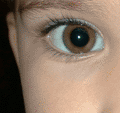 No, this is not about Mazda and its weird "zoom-zoom" commercials (though I've owned two Mazda rotary engined cars I never understood that one). It's about our kind of zoom, the twist of the lens that brings you closer.
No, this is not about Mazda and its weird "zoom-zoom" commercials (though I've owned two Mazda rotary engined cars I never understood that one). It's about our kind of zoom, the twist of the lens that brings you closer.
Zooming seems hardly a topic worthy of an entire column, but when it comes to digital cameras it is. Not for experts perhaps, but for those relatively new to digital cameras who have to make a decision what to spend their money on. So I want to point out a few things about zooming and digital cameras, what types of zoom there are, and what to look out for.
Interestingly, while almost every digital camera has a built-in zoom lens, that really wasn't the case with film cameras. Most just had a standard fixed lens, and if you wanted to get closer you either cozied up to the subject if you could, or you marked up the print and then asked the photolab to enlarge the part you were interested in. You could get zoom lenses of course, but mostly for single lens reflex cameras. I had a couple for my succession of Nikon SLRs, but among serious photographers they were frowned upon as an easy way out, a shortcut tool that took the art and craft out of taking pictures, a lens that was a jack of all trades but a master of none. That may or may not have been so, but for digital cameras it's irrelevant (unless, of course, you're a hard core photographer who thinks that zoom lenses are an easy way out).
Anyway, when I got my first real digital cameras back in 1997 or so I was surprised that most had an internal zoom. I quickly found out why. If you only have 640x480 or 800x600 pixels to work with, you couldn't take a picture and later enlarge the parts you liked. The resolution just wasn't there. The resolution of those early digicams was so low that you always had to get as close to your subject as possible. You simply couldn't afford to crop later. A zoom helped because it let you get closer, thus getting halfway decent pictures even at the low imager resolutions of the day.
So a tradition was born. Digital cameras have zooms. It's hard to find one that doesn't. For some reason, 3X has become the standard. 3X means that the picture you take at full magnification looks as if you were about three times closer to your subject.
So let's talk a bit about what to look out for with zooms. First, make sure you have a very clear understanding of the difference between "optical" zoom and "digital" zoom. Optical zoom is the real thing. It actual uses the optical magnification properties of the lens to bring you closer. Optical zoom uses all the pixels in your camera. Even at full zoom, image quality will be as good as without zoom. Digital zoom is different. This is simply a trick. "Zooming" here means nothing more than zeroing in on part of your picture, then enlarging the picture by doubling or tripling the size of each pixel. You get no more detail because there is none. You simply get a low resolution, blocky picture no matter how many megapixels are in it.
Fortunately, only a few digital cameras these days have nothing but digital zoom. It's mostly the really tiny, ultra-slim ones. I'd stay away from those. You can actually get very small, very slim cameras that have real optical zooms--more on that in a minute. If you do have a digital camera that only has digital zoom, don't use the zoom. You're better of taking a picture and then using your image editing software to zero in on the area you want to enlarge and make the best of it.
Most digital cameras today actually have both optical and digital zoom (just as most camcorders do). You may have seen labels like "3X/4X." That means 3X optical magnification and 4X digital magnification. Sometimes you might see a claim like "18X" total zoom. They get that number by multiplying optical zoom times digital zoom. By now you probably realize that 6X optical times 3X digital is much better than the other way around.
Above I said that today even very small cameras can have optical zooms. Thanks to amazing miniaturization and ingenious folding mechanisms, the likes of Minolta and Sony have found ways to put a full 3X optical zoom inside tiny cameras without the lens barrel sticking out at all! That's because the lens actually moves back and forth inside the little body and then uses a mirror system so that the lens never protrudes from the camera. I love that technology as I dislike lenses that motor out by an inch or an inch-and-a-half from an otherwise very sleek and compact camera. I like to be able to take an ultra compact with me and simply slide it in my pocket when I don't use it. That's easy with one of those little wonders with completely internal optical zooms, and more cumbersome with those that have a zoom lens motor in and out.
A final word about digital zoom: not all digital zoom is useless. Some of the leading digital camera companies have found ways to cleverly enhance the usefulness of digital zoom. Some use tricks that make digital zoom act almost like optical zoom. The secret is that you can only use it in the lower resolution modes of the camera. You set a 5-megapixel to, say, 1024x768 mode. The camera then makes use of all the unused pixels to create a much better digital zoom image than you'd get otherwise. There are other similar tricks. And often you actually get very good pictures by applying digital multiplication wisely. Just don't go for the maximum combined zoom and expect a razor sharp image. Incidentally, if you do plan on using the digital zoom, having a camera with an "anti-shake" feature helps to steady the picture (as does, of course, a good old-fashioned tripod).
How much zoom do you need? The standard today is 3X optical, and that isn't bad. However, one gets spoiled and these days I find I want more. 3X just doesn't get you close enough, and for all the reasons mentioned, I generally stay away from digital zoom. Fortunately, 4X and even 5X optical zooms are becoming more common even in lower priced cameras.
For those who want to get closer yet, there is a whole class of cameras with massive optical zooms ranging from 8X to 12X. Such big zoom lenses generally dictate the shape of the camera. Don't expect 10X optical in a sleek little compact. However, if you don't mind a design dominated by its lens, some of the big-zoom cameras are amazingly small, light and handy. And there is truly nothing like having a massive optical zoom when you need it. With a 10 or 12X camera you can discreetly stand away from the action and yet be right in the middle of it. That can let you make shots you'd otherwise never get. Keep in mind, of course, that optical zooms create a different look. They "flatten" the image by bringing the background and foreground together. Our eyes and brains do notice when something is out of the ordinary. It can be an interesting look, but be aware of that.
Finally, for those who know a thing or two about photography, make sure you understand the correlation between digital camera zoom data (like 5.8 to 17.4mm) and traditional film camera zoom specs (like 38 to 114mm). Both are 3X, but while film cameras always use the same numbers because the film is always the same size, with digitals you may see 4.6 to 13.8mm or 6.7 to 20.1mm and both mean 3X. That's because digital imagers come in many different sizes.
So now that you know a bit more about zooms, go and get the kind of camera that suits your needs. And experiment a lot. It's fun and it'll help you get the most from your digital camera.








